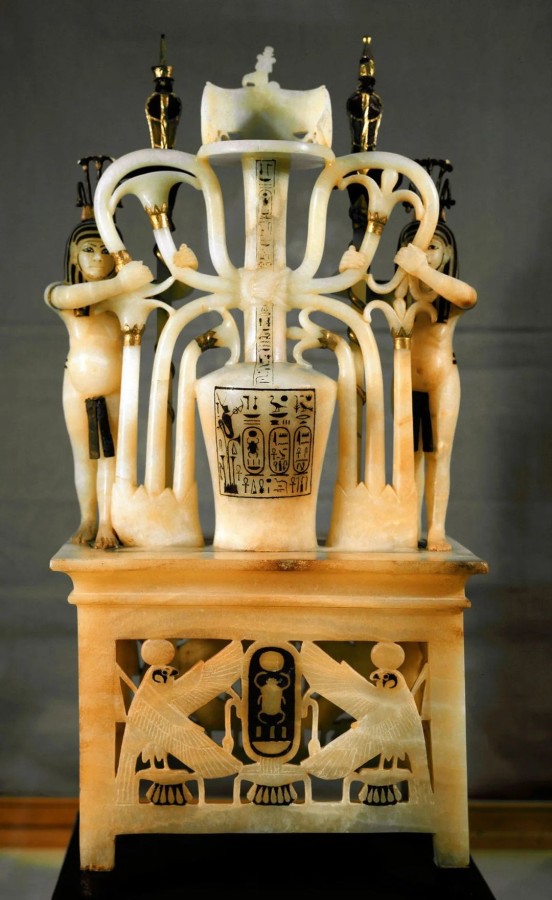Alabaster perfume vase upon ornamental stand, with cartouches of Tutankhamun, lotus and papyrus flowers forming a sema-tawy (unification of the two lands) and stems as renpet (time or eternity) signs. The vases found in the tomb of King Tutankhamun were commonly used to store precious oils and cosmetics for the king to use in the
Alabaster perfume vase upon ornamental stand, with cartouches of Tutankhamun, lotus and papyrus flowers forming a sema-tawy (unification of the two lands) and stems as renpet (time or eternity) signs. The vases found in the tomb of King Tutankhamun were commonly used to store precious oils and cosmetics for the king to use in the netherworld.

The theme of the decoration on the upper part is the union of the two lands, represented by the lotus and the papyrus. Along the upper part of the base, the environment in which the two plants grow is suggested. On the left, the papyrus springs from a marshy bed, and on the right, a checkered pattern probably depicts a system of irrigated plots for the growing of lotus plants.

Perfume Vase from the Tomb of Tutankhamun, lotus and papyrus flowers forming a sema-tawy.

From the Tomb of Tutankhamun (KV62), Valley of the Kings, West Thebes. Now in the Egyptian Museum, Cairo. JE 62117